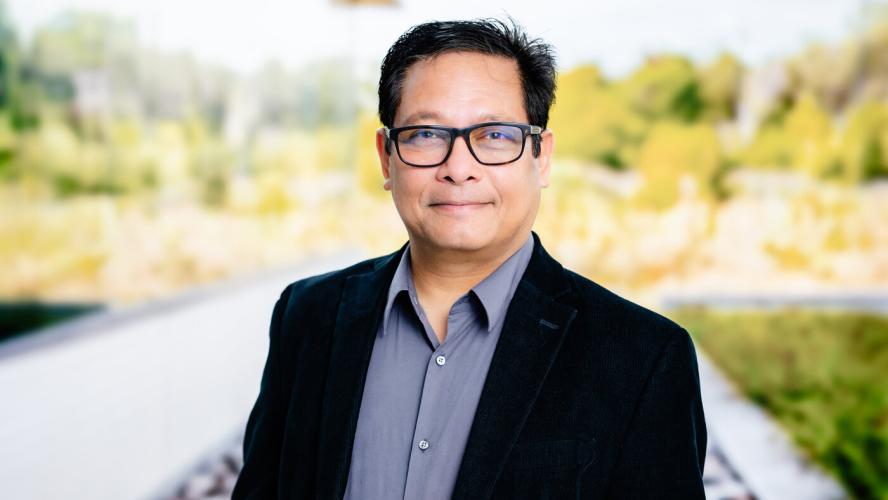
OHIO scientist Saw Wai Hla named 2024 Falling Walls Physical Sciences Laureate for groundbreaking work in physics

Last year, Saw Wai Hla made a groundbreaking discovery being the first scientist in the world to ever capture an image of a single atom using an X-ray. This year, his remarkable achievements in the field of physics are being recognized by being awarded the 2024 Falling Walls Science Breakthrough of the Year Laureate for Physical Sciences. This prestigious accolade recognizes his groundbreaking contributions to science and innovation.
“It is an incredible honor to be recognized among the top scientists globally,” said Hla. “This acknowledgment reflects the collective efforts of my team at Ohio University, Argonne National Laboratory, and the support we have received from the broader scientific community. I am grateful for this recognition and excited about the potential impact of our work.”
Hla, an Ohio University professor of physics and prominent researcher at Argonne National Laboratory, was originally named one of 10 finalists in the Physical Sciences category, recently being awarded the top winner, or laureate, within his category. This year, over 1,100 nominees from more than 300 institutions worldwide were considered for the Falling Walls awards.
His discovery demonstrates an innovative approach that aligns with the Falling Walls Foundation’s mission to highlight transformative scientific breakthroughs. The significance of Hla’s discovery lies in its potential to revolutionize various fields. Until recently, X-rays required samples of at least roughly one billionth of a billionth of a gram, which equates to about 10,000 atoms. Now, Hla and his team have achieved to measure the X-ray signal of just one atom. The ability to detect individual atoms could have profound implications for medical research, environmental science, and security. For instance, this technology could enhance our understanding of diseases at the atomic level, improve security measures by detecting dangerous elements and transform environmental monitoring.
“Professor Hla’s result is a striking advance that captures the imagination and opens doors to further progress,” Matthew Ando, dean of Ohio University’s College of Arts and Sciences, said. “The Falling Walls Award is an outstanding recognition that places him among the world’s leading scientists. I congratulate Professor Hla on his achievement and thank him for bringing attention to the outstanding research going on in our Department of Physics and Astronomy and across Ohio University.”
The project was a collaborative effort, with many contributing to its success. Although Hla designed and led the project, he notes that there were so many other people who contributed to this success from many different corners and that “it truly was a team effort.”
As a top award winner, Hla will present at the Falling Walls Science Summit in Berlin on Nov. 8 and 9, 2024. Both presentations will be livestreamed for viewers all over the world.
This prestigious conference brings together leading researchers, decision-makers, and innovators, as well as international politicians and young scientists to discuss and advance solutions to the world's most pressing challenges.
“What is truly special about this conference is that it also gives us the opportunity to talk with young scientists from all over the world and bring them together with change makers,” Hla added. “By bringing all of these great minds together, we can hope that the next generation of scientists will help progress the work we are currently doing forward in the future and connect with global leaders to help make change happen.”
Since its inception in 2009, the Falling Walls organization has aimed to honor the symbolic "falling of walls" between East and West Berlin on November 9 by celebrating groundbreaking scientific advancements. Winners of the scientific breakthrough awards are chosen through a rigorous selection process involving invitational juries and expert votes.
To view Hla's Nov. 8 presentation, visit https://falling-walls.com/programme/winner-pitches-physical-sciences-symposium.
To view Hla's Nov. 9 breakthrough presentation, visit https://falling-walls.com/programme/saw-wai-hla-breaking-wall-128-years-x-ray-history.
